How Syntan Additives Improve Leather’s Aesthetic and Functional Properties
Leather has long been cherished for its beauty, durability, and versatility. Whether used in fashion, furniture, or automotive upholstery, leather products are often associated with luxury and high-quality craftsmanship. However, the leather production process involves several stages, one of the most crucial being tanning. Tanning is the process of turning raw animal hides into durable, flexible, and weather-resistant leather, and a significant part of this process relies on the use of syntan additives. These synthetic tanning agents play a pivotal role in enhancing both the aesthetic and functional properties of leather, contributing to its final appearance, texture, and performance.
What Are Syntan Additives?
Syntan additives are synthetic tanning agents used in the leather tanning process to modify the properties of leather. Unlike traditional vegetable tanning agents or mineral tanning chemicals, syntan additives are man-made compounds designed to achieve specific results. These leather chemicals are often used in combination with other tanning methods to enhance various aspects of leather, such as softness, color, and resistance to environmental factors.
These synthetic leather tanning chemicals are highly versatile and can be tailored to achieve desired effects, depending on the type of leather and its intended use. From improving the texture of leather to increasing its water resistance, syntan additives are an essential component of modern leather production.
Enhancing Aesthetic Properties with Syntan Additives
Leather’s aesthetic properties—such as its color, texture, and finish—are crucial factors in its appeal. Syntan additives play a vital role in elevating these qualities, ensuring that leather products meet the aesthetic expectations of consumers.
1. Improved Coloration
Syntan additives, particularly those based on aromatic compounds, can significantly enhance the color of leather. These additives help achieve deeper, more vibrant hues while ensuring uniform coloration across the leather surface. By using syntan additives, manufacturers can produce leather in a variety of shades, from rich, dark browns to vivid, eye-catching colors, without compromising the leather’s natural texture or quality.
These leather chemicals also ensure that the dye is absorbed more effectively, reducing color fading or unevenness that can occur during exposure to light or wear over time. The result is a high-quality, aesthetically pleasing leather product that maintains its vibrant appearance for longer.
2. Softness and Smooth Texture
One of the most sought-after characteristics of high-quality leather is its softness. While traditional tanning methods can sometimes result in leather that feels stiff or rough, syntan additives can soften the leather, giving it a luxurious, supple feel. This is particularly important in applications like clothing, footwear, and furniture, where comfort and tactile appeal are crucial.
Syntan additives also enhance the smoothness of leather, preventing the development of unwanted surface textures or blemishes. This helps create leather with a flawless, polished appearance, perfect for premium products that require a high level of craftsmanship.
3. Gloss and Shine
Leather’s natural gloss and shine are often enhanced through the use of syntan additives. These leather chemicals contribute to a smooth, glossy finish that not only adds to the visual appeal of the leather but also provides a protective layer. The shine enhances the leather’s depth, creating a lustrous surface that is both attractive and durable.
Manufacturers can tailor the level of gloss to suit different types of leather products, from subtle, matte finishes to high-gloss, reflective surfaces. This versatility allows syntan additives to meet the diverse aesthetic demands of the leather industry.
Improving Functional Properties with Syntan Additives
In addition to their aesthetic benefits, syntan additives also play a crucial role in improving the functional properties of leather. These enhancements ensure that leather products perform well under various conditions, making them more durable, comfortable, and resistant to environmental factors.
1. Increased Durability
One of the primary advantages of using syntan additives is the improvement in leather’s durability. Syntan additives help to strengthen the leather’s fibers, making them more resistant to damage from wear, tear, and exposure to the elements. This is particularly important for leather products that are exposed to harsh conditions, such as outdoor furniture, automotive upholstery, and workwear.
By improving the leather’s resistance to abrasion, cracking, and splitting, syntan additives ensure that leather products maintain their integrity and longevity, even with frequent use.
2. Water Resistance
Water resistance is an essential feature for leather products that are likely to be exposed to moisture, such as shoes, jackets, and bags. Syntan additives can be designed to enhance leather’s resistance to water, preventing the material from absorbing moisture and becoming damaged. These leather chemicals help create a barrier that repels water, ensuring that leather retains its shape and functionality, even in wet conditions.
This water-resistant property also helps prevent mold and mildew growth, which can occur when leather becomes damp. By incorporating syntan additives into the tanning process, manufacturers can create leather products that perform better in humid or rainy environments.
3. Flexibility and Comfort
Leather that is too stiff can be uncomfortable and difficult to work with, especially in applications like footwear or clothing. Syntan additives help improve the flexibility of leather, allowing it to bend and move without losing its shape. This enhanced flexibility contributes to the overall comfort of leather products, ensuring they mold to the wearer’s body or conform to the intended use.
Syntan additives also reduce the tendency for leather to become brittle over time. This ensures that leather products maintain their functional properties, such as elasticity and softness, even after prolonged use.
4. Protection Against UV Damage
Exposure to sunlight can cause leather to fade and become brittle. Syntan additives can be formulated to include UV inhibitors, which protect the leather from the harmful effects of ultraviolet radiation. This added layer of protection ensures that leather retains its color and texture, even after prolonged exposure to the sun.
For products like leather car seats or outdoor furniture, UV protection is essential to prevent premature aging and discoloration. By incorporating syntan additives with UV-blocking properties, manufacturers can create leather products that remain looking new for longer.
Syntan additives have revolutionized the leather industry by offering manufacturers the ability to customize the aesthetic and functional properties of leather products. From enhancing color and texture to increasing durability and water resistance, these leather chemicals have become indispensable in modern leather tanning. The result is leather that is not only beautiful but also practical, with improved longevity, comfort, and performance.
As the demand for high-quality leather continues to grow, syntan additives will remain at the forefront of innovation, ensuring that leather products meet the ever-evolving needs of consumers.
As the demand for high-quality, eco-friendly leather increases, advancements in chemical formulations, such as VINTREAT POLYMERS, will play a crucial role in shaping the future of leather production. At Vinati Organics, we understand the importance of leather processing chemistry in driving both craftsmanship and innovation. Get in touch with us to seek more information on the same, today.







